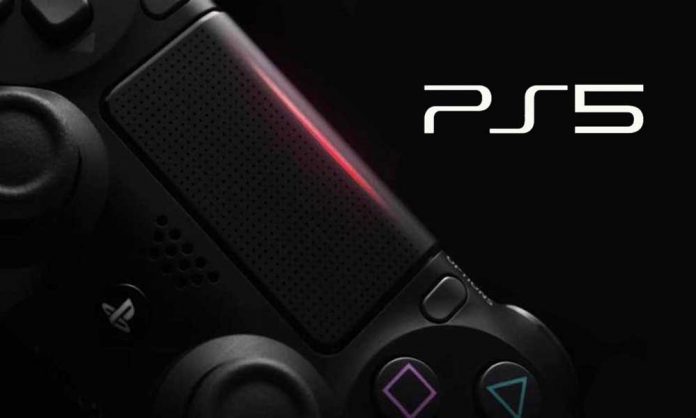Believe it or not, last month marked the six-year anniversary of the PlayStation 4 reveal event held by Sony in New York City on February 20, 2013. It was there that PS4 system architect Mark Cerny confirmed that his parallelepiped-shaped console – based on a “supercharged PC architecture” – would sport a x86 processor, an AMD Radeon HD 7850-analogous GPU and 8GB of GDDR5 RAM.
Given that those specs align more with a gaming PC from over half a decade ago than one built today, it’s only a matter of time before we’re playing PS5 games in our living rooms, with DualShock 5 controllers, and maybe even PSVR 2.
With two teraflops of calculative processing power, the PS4 could double the number of polygons rendered in real-time by its predecessor, the PS3. Think of how good the best PS4 games now look compared to PS3. Suffice to say, the bar is bound to be high for the PS5, a console that has to exceed the performance threshold of not only the original PS4, but the 4.2-teraflop and 4K-capable PS4 Pro released in November 2016.
It also has to compete with the likes of the Xbox One X, the “world’s most powerful console,” according to its helmer, Microsoft. And although it hasn’t yet been referenced by name in any official capacity, the PlayStation 5 is all but confirmed.
PS5 release date and price: all signs point to 2020 kickoff, $399
In an interview with the Financial Times, CEO Kenichiro Yoshida stressed that it is “necessary” for Sony to “have a next-generation hardware.” Last May, in a separate report for the Wall Street Journal, CEO of Sony Interactive Entertainment John Kodera hinted at a potential release window, stating that the “next step” in his division is being prepared over the coming three years.
In the interim, the company is laser-focused on putting out exclusive games while continuing to support its online-based subscription services: PlayStation Plus, PlayStation Now, and PlayStation Vue. Sony aims to carry out this plan all the way through its 2020 fiscal year, ending on March 31, 2021.
Even so, there’s no reason to believe a PS5 couldn’t come out alongside rolling support for its precursor. After all, the PS2 – Sony’s best-selling console to date – went on to sell another 40 million units over the next seven years from the time the PS3 was released. Though Sony stopped revealing its lifetime sales figures subsequent to the launch of the PS4, the PS3 was still being shipped well into 2016, with North American retailers receiving their final haul of consoles that October.
It wouldn’t be out of character, then, for Sony to launch a new console before phasing out the PS4. Perhaps that explains why several analysts are now predicting that the PS5 will arrive in the flesh next year, in 2020.
Read more
The best new games of 2019
NPD Group analyst Mat Piscatella, for example, thinks we’ll see a next-generation PlayStation announced later this year, according to GamesIndustry.biz, suggesting that after a triumphant 2018, 2019 will see console sales begin to stagnate.
That makes sense considering that, at this point, pretty much everyone who has ever wanted to own a PS4 has already bought one. In that same feature, Dr. Serkan Toto of Kantan Games anticipates we’ll get the “first details” regarding the PS5 later this year, which he suspects will “[include] an increased focus on cloud and subscription models.”
About a week after the aforementioned GamesIndustry.biz article went live, GamingBolt published an interview with International Data Corporation (IDC) analyst Lewis Ward, who speculated that “2020’s E3 is when Sony and Microsoft will be unveiling their new systems,” thereby rejecting the notion that 2019 is the year we get a proper introduction to the pair of boxes guaranteed to occupy our entertainment centers whenever they’re eventually brought to market.
Interestingly, contrary to his PS5 sentiments, Ward expressed that there’s a chance the PS4 could see a “modest hardware [refresh]” later this year, whatever that means.
As for what it’ll cost you, all we can refer to is a report from NDTV’s Gadgets 360 citing a deleted Reddit post in r/xboxone claiming a shelf price of $399. Even if it was verified by an alleged insider on video game forum and healthy NeoGAF alternative ResetEra, it could easily be chalked up to a safe guess considering a current-gen PS4 Pro would set you back the same amount. The Reddit user, writing under the pseudonym “Novamonbasa,” says the PS5 was pushed back from its initially planned release date, explaining that “the target was 2019,” but that Sony had to delay the console for some unknown reason.
“I don’t know the actual date,” the user added. “Can be early 2020.”
Much as one might assume the next PlayStation will be called PS5 given the typical structure of Sony’s naming conventions, user Gemüsepizza posted in the popular gaming forum ResetEra their findings of a reference to a platform named “Erebus” in Unreal Engine 4. Following in the footsteps of Orbis (PS4), Project Morpheus (PlayStation VR), and Neo (PS4 Pro), it’s not too far-fetched to presume Sony would use another reference to Greek mythology with its internal codenaming of its next-generation console. Erebus, the god of darkness born from chaos, fits the bill.
Another name floating around the rumor mill is Project P. Speaking with GamesRadar directly, a source familiar with the matter informed us of the Project P handle in a private conversation. Apparently, it’s being used in exchanges between Sony and its third-party partners. Be that as it may, our source did admit Erebus is another nickname for the approaching console. For what it’s worth, though, our money’s on PS5 for its stage moniker.
PS5 specs and performance: 4K’s a shoo-in, but 8K 120fps is unlikely
It should come as no surprise that Sony is working with AMD, according to Eurogamer, on the PS5’s internal hardware seeing as both the PS4 and PS4 Pro leveraged APUs based on the Red Team’s ‘Jaguar’ microprocessor architecture. While the vanilla PS4 housed a set of two quad-core modules clocking in at 1.6GHz per core, the souped-up PS4 Pro ramped up the frequency to 2.13GHz per core, indicating a 33% bump in CPU performance. On the graphics side, the PS4 Pro’s GPU was tuned to a frequency of 911MHz, about 14% higher than that of the original PS4. For a broader measurement, you can compare the 1.84-teraflop PS4 with the 4.2-teraflop PS4 Pro.
Advertisement
Unlike the PS4 and its professional sibling, however, the PS5 will definitely be based on more contemporary silicon. Having debuted two years ago, in 2017, AMD’s pioneer Zen architecture-based Ryzen chips may have been supplanted by the Zen+-based Ryzen 2nd Generation processors last April, but that hasn’t stopped one key programmer from Sony’s Advanced Technology Group from referencing them numerous times in a series of code cleanups he posted on GitHub. Discovering this phenomenon was Linux news and reviews website Phoronix, who identified the programmer as Simon Pilgrim, an R&D engineer working on PlayStation compiler tooling for Sony Computer Entertainment Europe (SCEE).
It’s admittedly disconcerting to think a next-generation console could be running on three-year-old hardware by the time it comes out. Fortunately, in June of last year, a few industry sources speaking with Forbes contributor Jason Evangelho emerged under the guise of anonymity to clear up some of the erroneous reports surrounding what’s really under the hood of the PS5. Their forecast? At least for its graphics, the PS5 is going to harness the power of the last-generation Zen CPU architecture in conjunction with AMD’s freshly revealed Navi graphics architecture.
Evangelho’s sources claimed that Navi was developed specifically for Sony and the PS5 by an engineering team working for former AMD Radeon Technologies Group head Raja Koduri. If these reports are to be believed, up to two thirds of Koduri’s engineers were dedicated solely to Navi at the same time that AMD’s previous-generation Vega graphics were being developed. Because CEO Dr. Lisa Su wanted to prioritize AMD’s semi-custom clients, such as Sony, Vega was treated as a second-class citizen. That could help to explain the Vega’s commercial struggle in the graphics card market. Well, that and the whole cryptocurrency mining debacle.
“AMD claims that the Radeon VII can handle running Devil May Cry 5 in 4K”
That Forbes report aligns with what our sister site Tom’s Hardware said of the PS5’s guts in a story that surfaced more recently in 2019. Stemming from a prominent PC hardware leaker called APISAK on Twitter, a new AMD system on chip (SoC) has been spotted. It’s called Gonzala, and a number of reputable tech journalists at trusted publications are convinced it’s being assembled with either Sony’s Erebus or Microsoft’s next family of consoles, codenamed “Scarlett,” in mind. A third possibility is that Gonzala will be used in the next batch of both PlayStation and Xbox systems, though Thurrott executive editor Brad Sams stated on his personal YouTube channel in December that Scarlett would use an 8-core AMD Zen 2 chip built on the 7-nanometer (nm) fabrication process.
Whatever the case may be, written out in its entirety in a linked Imgur post, Gonzala’s full codename does suggest it’s being constructed for game consoles and not PCs. In fact, instead of comprising its own separate architecture, Gonzala seems like a frankensteined convergence of Zen and Navi, boasting eight cores and a 1GHz base clock. If that sounds unimpressive then stay with us: its boost clock is purported to be 3.2GHz. Comparatively, the the PS4 Pro caps out at 2.13GHz. For the mathematically deficient, that kind of power would give the PS5 a theoretical increase of over 50%.
The price-“leaking” Reddit post we brought up earlier spells out a similar future for the PS5, one characterized by a custom AMD Zen 2 processor and Navi graphics. Here’s the full rundown, courtesy of Gadgets 360:
- CPU: Custom 8-core, 16-thread Zen 2 CPU
- Graphics: Custom Navi (8+ teraflops)
- RAM: 12GB GDDR6
- Storage: 1TB SSD
- Price: $399
Meanwhile, AMD’s first 7nm graphics card, the Vega-based Radeon VII, is slated for release next month – on February 7, 2019. Around that time, we’ll start to see benchmarks giving us a glimpse of what we can expect from the PS5’s performance.
Even though it is based on AMD’s current-gen architecture, word on the street is that the Radeon VII shares its 7nm manufacturing procedure with the early Navi GPUs. AMD claims that the Radeon VII can handle running Devil May Cry 5 in 4K and “well above” 60fps, though that game in particular isn’t very demanding judging by its system requirements, published by our sister site PC Gamer.
No matter how powerful the Radeon VII may be, it’s worth noting that the graphics card costs $700 alone. It’s likely the PS5 as a whole will be priced much lower than the first 7nm GPU alone, which may have something to do with the system’s unusual separation of processor and graphics.
In the PS4 and PS4 Pro, both were integrated onto the same chip, which AMD calls an APU, or accelerated processing unit. It hasn’t been since the PS3 – with its proprietary cell processor and Nvidia RSX ‘Reality Synthesizer’ GPU – that the two were distinct pieces of hardware acting independently of one another.
When you think about it, it’s understandable Sony would shy away from Nvidia graphics for the second generation in a row. Despite the Green Team having a better reputation in the consumer graphics card market, especially on the high end, it’s more cost-effective to design a console that consolidates the central processor and the graphics processor into a single die.
Other than what we know about the Radeon VII and the Ryzen PC components of the past, as of this writing, we don’t have enough information on the PS5’s Navi- and Zen-based APU to adequately assess its capabilities.
Advertisement
That said, at the Inter BEE conference held in Tokyo back in December, Sony did treat us to a snippet of hyperrealistic gameplay that couldn’t possibly have been running on a PS4. Showcasing its upcoming Crystal LED Display System (CLEDIS) TV technology, the company exhibited an unnamed racing title running at a resolution of 7680 x 4320 (8K) and a frame rate of 120 frames per second (fps), according to TweakTown. The author of that piece, Anthony Garreffa, seems to believe the footage – which lasts a mere 12 seconds – is of Polyphony Digital’s next-gen Gran Turismo title. And if we’re being honest, that’s not too outrageous of a claim.
Polyphony CEO Kazunori Yamauchi did say in an interview with Finder.com that the art assets developed for its 2017 game Gran Turismo Sport were “over-specced” for the PS4 Pro, and that the studio would be “building for future versions of the console.” Of course, it’s impossible to say for certain whether a random video clip leaked on the internet by a YouTube user who calls himself “ERT_tomke3sgte” is actually related to Gran Turismo, or Polyphony Digital, at all. Perhaps it depicts a tech demo conceived solely for marketing purposes. Or, who knows, maybe it’s an early look at Driveclub 2.
Whatever the case may be, unless it’s at the lowest possible graphics settings, even the most expensive gaming PC will struggle to run the latest AAA games at an 8K resolution. And 120fps? You can forget about that completely. The harsh reality is that we have no idea what sort of contraption Sony had hooked up to that lavish 8K screen. For all we know, it could have been a hardy desktop dual-wielding Nvidia Titan RTX cards. Now that we’d like to see. Until it becomes a feasible reality in the far-off realm of PCs, we wouldn’t bank 8K 120fps gaming on a PlayStation home console. But then again, we’ve been wrong before.
When Sony announced the PS4 Pro, journalists and analysts alike were skeptical that any console under $500 would be powerful enough for 4K gaming. So you can imagine our shock once the $399 price tag of the machine was confirmed. Using a technique called temporal checkerboard rendering, in most games, the PS4 Pro prioritizes the objects on-screen that your eyes are presumably focused on. Less detailed are the areas that they’re not. Close-up environments and textures, then, are presented at a higher resolution than some of the more trivial aspects of the game off in your periphery.
That by itself is pretty cool, but think: if the PS4 Pro could pull off Sony’s checkerboard wizardry, a souped-up, Navi-based device might be able to do the same on a much grander scale. Erring on the side of caution, we’ll refrain from saying 120fps is in any way a likelihood, but maybe – just maybe – 8K is an attainable goal, so long as it’s not rendered natively. For us personally, we’d rather see the PS5 deliver true 4K gaming at 60fps than cater to the needs of the miniscule number of early adopters wealthy enough to afford an 8K TV with a refresh rate high enough to display 120fps. At the time of this writing, a sufficiently sized 8K screen will set you back over 10 grand.
In terms of audio, Microsoft has taken the lead this generation. Xbox One is the only major console on the market right now supporting Dolby Atmos and Windows Sonic, therefore it’s graced with 360-degree audio compatible with virtually every gaming headset you can buy. At long last, Sony plans on implementing a similar technology “in an interactive capacity,” according to Forbes. Reminiscent of Microsoft’s Windows Sonic rather than Dolby Atmos, Sony announced at CES 2019 it’s developing its own “object-based spatial audio technology” called 360 Reality Audio. Obviously, it’s something that could make its way to PS4 in time for the looming holiday madness. But, either way, it’s a no-brainer for PS5.
Advertisement
Another feature that seems viable for PS5 is vsync on a hardware level. In a patent unearthed by video games and technology website GearNuke, Sony references a new way to eliminate screen tearing on its consoles without the need for specialized displays. By tapping into the power of its GPU, the system would be able to fill in for dropped frames using a technique called “vertical blanking” to match a game’s framerate with the refresh rate of your display. That way, “each image updated on the screen of the display would perfectly correspond to the source frames generated by the GPU,” says the patent.
PS5 console: another standard box or a handheld hybrid?
Following the discontinuation of the ill-fated PlayStation Vita, we’re snickering at the idea that the PS5 could be a handheld. Sony doesn’t exactly have the best track record in that regard. But Nintendo does, and we know how much both of those companies like to steal each other’s thunder. Bearing in mind the overwhelming success Nintendo has had with the Switch, a PlayStation home console that doubles as a portable one sounds awesome. We’d kill to play a God of War or Horizon: Zero Dawn sequel on the go. Tentative as they are, a handful of reports seem to point in that direction, too.
Back in November, Dutch news source Techtastic brought to light a patent filed by Sony for an “electronic game cartridge” that could be supported by an upcoming handheld. We suppose it could also be for a traditional home console, though we haven’t seen a cartridge in one of those since the Nintendo 64 days. So it’s probably for a handheld. The cartridge itself is very bizarre looking. At the top, it has a hole that looks like it could be useful for carrying your games around on a keychain. On the bottom is a connector port of some kind in case, for some reason, you’d want to plug the cart into an external device.
Around the same time, Sony also patented a touchscreen PlayStation controller, as per GameRant’s reporting, reminiscent of the MacBook Pro Touch Bar that replaced its function keys some years ago. Should it ever come to fruition, the otherwise DualShock 4 (DS4)-like controller will have a small touchscreen rather than the touchpad it has now. In theory, the main difference would be the potential for visual cues in addition to its currently limited touch input functionality. Whereas the touchpad on the DS4 is primarily used for pulling up maps and setting waypoints, a touchscreen could allow for more complex gestures, such as editing levels in LittleBigPlanet or solving puzzles in the UbiArt Rayman games.
More often than not, patented products like these never make their way to market. In many instances, the patents themselves are filed as a cautionary measure. If Sony ever did decide to make a controller that, according to the patent, is “defined along the top surface of the main body between the first extension and the second extension,” all its bases would be covered. It wouldn’t have to worry about a competitor coming in and trademarking the idea, and if one did, it could reel in droves of cash by taking legal action. While we wouldn’t bet money on seeing PS5 game cartridges or touchscreen controllers, documents like these offer a compelling look into the minds of the engineers working on the next-generation console.
In late January 2019, the Patreon-funded YouTube channel Foxy Games UK uploaded a video detailing an alleged prototype of an undisclosed PlayStation handheld he called “Sony’s worst kept secret.” In it the narrator, who addresses himself by the name Fox, claimed the portable console “has been in R&D for a long time, years even” and will act as a competitor to the Switch. In an attempt to fill the gap left by the dwindling home console market, Fox’s sources suggest Sony’s PS Vita successor will have 128GB of built-in storage made better by the prospect of “cutting-edge compression techniques” and “smart AI predictive storage,” plus SD card support. Built-in HDMI-out would differentiate the device from its dock-bound rival.
Advertisement
Our Sony insider has since debunked the Foxy Games UK’s seemingly optimistic conspiracies. “If there was [a new Sony handheld] being developed, it would have been very recent. As in the past, 3-4 months they start conceptualizing it. PSVR and PS4 are the core hardware right now.”
Back to IDC analyst Lewis Ward’s opinions on the matter, he says the next round of home consoles from Sony and Microsoft “won’t have built-in screens and will have disc drives.” Instead, the PlayStation 5 and the next Xbox will act as more conventional successors to the PS4 Pro and Xbox One X systems we know today. Marc-André Jutras, technical director at Cradle Games, the developer behind upcoming sci-fi RPG Hellpoint, seems to agree. In an interview with GamingBolt, Jutras said that while a discless version of the PS5 could exist, he believes “there will still be a version with discs.”
However, in that same interview, he does admit he would prefer to see Sony and Microsoft adopt the cartridge approach that Nintendo has so readily embraced:
“One thing I would like to see, is some games should be able to be offered on cartridges or USB keys. For developers when we end up trying to ship games on a disc, it’s pretty much always the same issue, you have to have your game ready ahead of time by two months, so they can be pressed on disc. I think the issue of having a disc or a USB key or a cartridge is pretty much the same. I could see that printing Blu Rays takes time, just to do it properly. Flashing a USB key with an existing image on the other hand is much faster.”
As of late December 2018, famed headline captor and WedBush Securities analyst Michael Pachter was eager to claim Microsoft is working on a discless Xbox that’s focused on streaming games rather than running them through local storage. Patcher said he anticipates a “dumbed down console, like the Steam console” from Microsoft, possibly referring to discontinued Steam Link device Valve put out in 2015. An Xbox-branded streaming device like that, he said, would cost around $100. But he was hesitant to say the same for Sony, whose cloud-based PlayStation Now streaming service hasn’t quite taken off in the five years since its release.
nstead, Pachter alluded to the PS5 as a device capable of producing 4K graphics at 240fps, one that would support PlayStation VR as well. “Whether they have a PlayStation Now device that is streaming only, I don’t know,” he explained. “Maybe there will be two each for PlayStation and Xbox, but I would be surprised if there were more than two, and I’m not sure whether Sony is committed to doing that.” We’re not sure either. With Sony charging $20 a month (or $100 a year) for PS Now and neglecting to disclose the number of players subscribed to the service, a streaming-first PlayStation model doesn’t sound like the best idea.
PS5 games: backward compatibility and the future of PSVR
Advertisement
One of the most enticing features of the Xbox One is its ability to play games spanning multiple generations of hardware. Original Xbox and Xbox 360 games are available to purchase straight from Microsoft’s digital Store. And once you’ve downloaded your pick of the litter, you can play everything from Alan Wake to Grand Theft: Auto San Andreas using native Xbox One hardware. Alternatively, you can even run some old games from the disc directly, similar to what Sony did with the first batch of PS3s back in the day.
Unfortunately, the PS4 is an entirely different beast. As we touched on earlier, the cell processor was a “unique” piece of kit, making the bulk of its game library difficult to emulate. Enabling backward compatibility across the entire spectrum of PS4 consoles, then, would be an arduous undertaking. The PS5 is another story altogether, at least according to NPD Group analyst Mat Piscatella, who’s quoted in yet another interview with GamingBolt stating he’d be “surprised if the PS5 were not [backward] compatible with PS4 content.”
However, Piscatella then went on to compare the PS5’s take on backward compatibility with the PS4’s existing plan of attack:
“Sony already has a streaming solution in market with PlayStation Now,” he said. “It wouldn’t surprise me if both PlayStation 5 and the next Xbox took this type of approach, although I’m sure they’d do so in slightly different ways with different messaging.”
When we think of backward compatibility, streaming isn’t the first thing that comes to mind. Still, investing in PlayStation Now this year would be a wise move for Sony. In but a few short months, 5G will begin to overtake our current 4G LTE and WiMax networks, and fiber optic speeds previously restricted to well-off metropolitan areas will be accessible from desktops, laptops, and consoles in addition to mobile broadband-connected smartphones and tablets by way of forthcoming 5G WiFi routers like the D-Link DWR-2010.
Upon the arrival of the 5G spec, it won’t be long before cloud-based gaming is a feasible reality, and Sony already has the infrastructure to provide. When it officially launched in 2014, Sony Computer Entertainment social media manager Sid Shuman said PlayStation Now would require an internet connection speed of 5Mbps for a “good experience.” The 5G spec promises data rates up to 10Gbps, 200 times that which Sony recommends for PS Now. All it needs is a healthy dose of intelligible marketing and the streaming service could finally enjoy its time in the spotlight.
At any rate, the larger fan reaction to Xbox One backward compatibility is evidence that gamers are clamoring for emulation, not streaming. According to a US patent filed by Sony Interactive Entertainment and spotted by GearNuke, there is reason to believe the PS5 will offer games from the entire PlayStation bloodline. The patent, called “Remastering by emulation,” appears to indicate a new method of implementing high-resolution art assets into legacy software “on the fly.”
Similar to the “texture packs” PC gamers have been concocting for years, remastering by emulation could serve as a cost-efficient way to improve the graphics quality of older titles without remaking them from the ground up. Sure, it’s a stretch to say this equates to “the ability to play our PS4, PS3, PS2 and PS1 games on the PlayStation 5,” as GearNuke puts it. Even so, we can see how it would be interpreted as such. The American “Remastering by Emulation patent” isn’t the only sign we have that backward compatibility is on its way, either.
A more recently discovered Japanese patent describes a technique which enables Sony hardware to “determine whether an application is a legacy application or not,” according to our own Alex Avard. Authored by PS4 lead architect Mark Cerny, who is reportedly playing a role in the PS5’s development, the feature being outlined here sounds like a no-brainer for Erebus – or Project P, what have you. Moreover, the patent examines the potential for putting imitation legacy chipsets inside newer hardware. In doing so, Sony could avoid the obstructive hurdles that often thwart emulation efforts.
Advertisement
It goes without saying that backward compatibility patents naturally contribute to the rumor mill fodder. But what of PlayStation VR? In case there were any doubts, Intruders: Hide and Seek developer Tessara Studios’ Pablo Lafora said in an interview with GamingBolt that “VR will be very important in PS5,” indicating continued support for the headset whenever the next generation decidedly touches down.
And after (correctly) predicting Sony’s decision to back out of E3 2019, Reddit user RuthenicCookie shared some alleged PSVR 2 details we’ll be taking with a considerable sprinkling of salt. For instance, the breaker box which accompanies the PSVR headset today will no longer be necessary for PSVR 2. Instead, the tipster claimed that 3D audio processing and social screen functionality currently handled by discrete hardware will be incorporated into the head-mounted display itself. Furthermore, the user said new PlayStation Move controllers are in the works alongside a camera that tracks DualShock 5 movement.
Oh yeah, and Sony is “testing some gloves to go with the VR,” too.
As for its games, the PS5’s launch library remains as elusive as its release date. Sadly, there’s a shortage of trustworthy sources to base our predictions on. Nevertheless, we do know PS5 is “most of the focus” for Sony’s first-party studios, with Niko Partners analyst Daniel Ahmad having posted about it publicly on ResetEra. He said that while “a couple of unannounced games” from established franchises are still on their way to PS4, he’s confident some of them will come to PS5 as well.
That matches up nicely with what we’ve heard from our insider who told us “no first-party PlayStation titles that have been announced” are going to be on PS5 exclusively.
“They’re all on PS4,” the source told us. “Nothing that’s been shown is going to be launching only on PS5.”
At least three first-party games are being developed for the PS5, though our source declined to divulge the names of the studios working on them.
On the third-party games front, GameSpot reported earlier this year that the research division at investment banking and financial services firm Cowen and Company stated amid Bungie-Activision drama that Destiny 3 will release in 2020. Though specific platforms were not mentioned, that projected window finds itself in agreement with the PS5’s anticipated 2020 release window.
Advertisement
In all likelihood, Heavy Rain and Detroit: Become Human developer Quantic Dream is also working on games for PS5. After a minority investment stake in the company was purchased by NetEase early this year, word spread that Quantic Dream is pivoting to the “creation of next-generation games.” Hot on the heels of its contract termination with Sony, however, there’s no telling what platforms NetEase is referring to.
From Ubisoft, we’ve heard mutterings of Watch Dogs 3 trademarking. Found by YouTuber SkullziTV, as reported by ComicBook.com, a trademark application originally filed back in November was processed a month later and is now pending approval. Because it stands alone from previous Watch Dogs trademarks, some are convinced that Watch Dogs 3 is being planned for the PS5, as well as Microsoft’s next console, in lieu of a current-generation release.
By the looks of this external lead producer job listing at Crystal Dynamics, it also seems as though The Avengers Project being published by Square Enix is a next-gen game. Or at least the developer is working on something next-gen judging by the first bullet point in the job description. Under the “Essential Duties & Responsibilities” sub-header, the listing suggests the person hired for the position will work “with external partners to build next-gen game releases.”
While that doesn’t necessarily mean The Avengers game, specifically, is a PS5 game, it tracks that Crystal Dynamics would be laser-focused on the upcoming Marvel title exclusively given the fact that Shadow of the Tomb Raider was handed off to Eidos Montréal. Clearly, there’s no room at the studio for creating multiple games at once. Therefore, we wouldn’t be surprised to see the “next-gen game releases” in question centering around Iron Man, Hulk, and the whole gang.
We’ve seen less credible rumors, such as this string of bold declarations from Reddit user joebucksucks420, who is said to have a friend at Rockstar. But, perhaps needless to say, these are all dubious assertions from an unproven source.
Per our earlier mention of Polyphony Digital’s hit racing sim franchise, Gran Turismo is due for its next numbered instalment. The last proper entry in the series, Gran Turismo 6, came out for PS3 after the PS4 was already released, resulting in disappointing sales compared with the titles that came before it. In 2017, Gran Turismo Sport was released for PS4, but rather than presenting players with a monumental list of cars and tracks, it doubled down on creating a balanced online racing experience. If released for PS5, Gran Turismo 7 could be a return to form for the series.
Other possible candidates for PS5 launch titles include a slew of games that are already in development. Ghost of Tsushima, from Infamous and Sly Cooper developer Sucker Punch Productions, could make the leap to PS5, as it was only just announced at E3 2018. Death Stranding, Cyberpunk 2077, Dragon Age 4, The Last of Us Part II, and the Final Fantasy VII Remake are all feasible contenders as well, though The Last of Us Part II may not make its PS5 debut until at least a year out from its PS4 release.
What 4K TVs will make PS5 games look their best?
Quite simply, 4K TVs are the future, and you’ll definitely want one by the time Sony sees fit to launch PS5. Actually, that last part was a lie: 4K TVs are already the present. As our list of the best 4K TV for gaming shows, you can already pick up a stunning 4K TV for around £500 / $600. While the vast majority of televisions in homes are still 1080p panels, Ultra HD models are quickly clawing out an ever increasing market share.
According to recent sales research, almost three quarters of big screen sets sold in North America in 2016 were 4K. If this trend continues, analysts predict that in 2019, close to 100% of all TVs sold in the US will be 4K-compatible. Take a trip to your local electronics store and you’ll quickly realise these stats are probably going to be spot-on – few large scale retailers sell 1080p-only displays in 2019.
PS4 Pro has already shown the stupendous results of pairing a respectable jump in processing power with well-tailored 4K presentation – both Horizon: Zero Dawn and Wipeout: The Omega Collection look exceptional played in their Ultra HD modes. Considering PS5 is likely to offer a quantum leap in performance over the base PS4, much of that extra horsepower will be wasted if you’re not playing games in 4K.
So if we settle on the fact Ultra HD sets will be industry standard by the time Sony’s next PlayStation launches, just what sort of displays are we going to be playing on? Right now, LED sets still dominate the TV market, but they’re not always brilliantly suited for fast-paced games – the underlying tech can often be plagued with motion-smearing issues on many sets. Luckily, more advanced screen tech is already available in the here and now to pair with that shiny PS5 you’re currently dreaming about.
LG’s OLED screens are currently the best gaming TVs money can buy. Most of the firm’s models are 4K, they’re all capable of producing the sort of inky blacks LCD/LED could only have moist dreams about, and they’re nowhere near as expensive as they used to be. By the time PS5 rolls around, you’ll most likely to be able to buy second-hand OLEDs from LG’s 2018 range – which are still phenomenal TVs – for well under $1000/£1000. Not exactly cheap, but certainly in the affordability realm for enthusiasts. What’s more, Sony and Panasonic have now entered the OLED space, and as the market gets more competitive, prices are only going to fall that much further.
Advertisement
Samsung has also reiterated its new QLED range of sets, which the Korean manufacturer is using to seriously compete with OLED. These ‘quantum dot light-emitting diode’ panels can display much deeper blacks than regular LED televisions, and with a claimed peak brightness of 1,500-2000 nits, they’re substantially brighter than OLEDs, too.
Those nits are also important for HDR (High Dynamic Range). A healthy handful of PS4 games already sport HDR modes, but few TVs in 2019 are truly capable of delivering bright enough whites to fully take advantage of the expanded contrast range. Going forward, the likes of QLED (as well as increasingly sophisticated OLED screens) should ensure HDR-compatible PS5 games look stunningly vibrant. With more and more devs inserting the feature into their games, don’t be surprised if all PS5 games support HDR, as standard.
We’ll be keeping this page updated as we find out more concrete information regarding the PS5 – err, Erebus. Until then, if you have any tips, you can shoot them over, anonymously or otherwise, to the author of this piece. If you want to know more about Microsoft’s next gen console, Xbox Project Scarlett, you can read all about that right here.
Via Inverse.com































